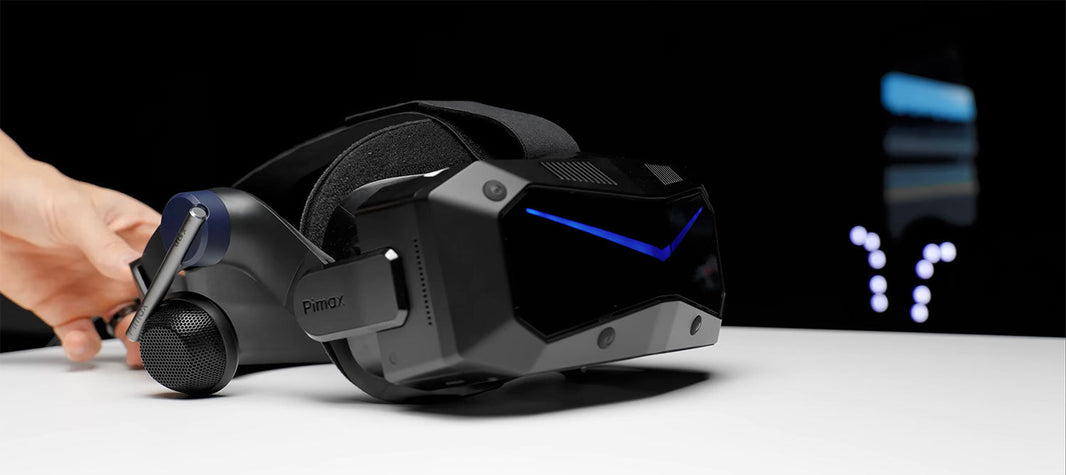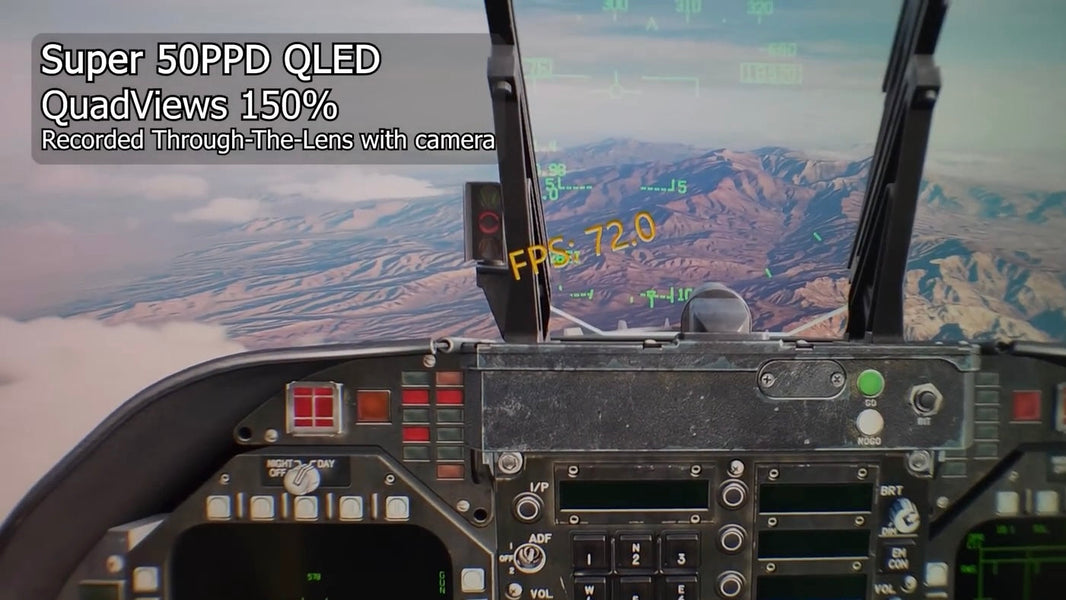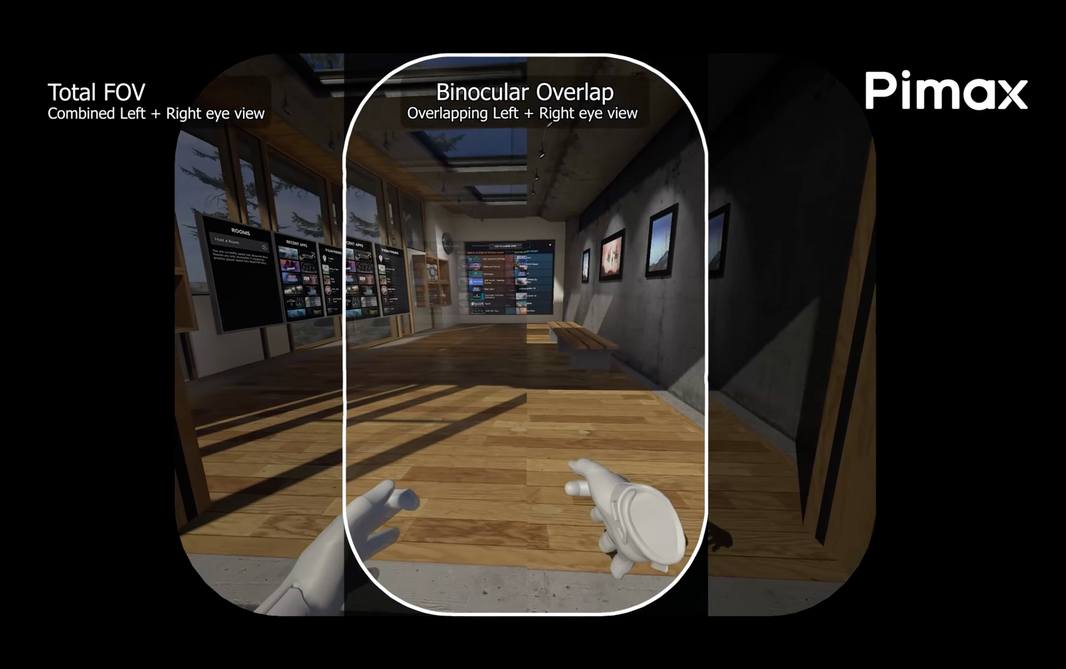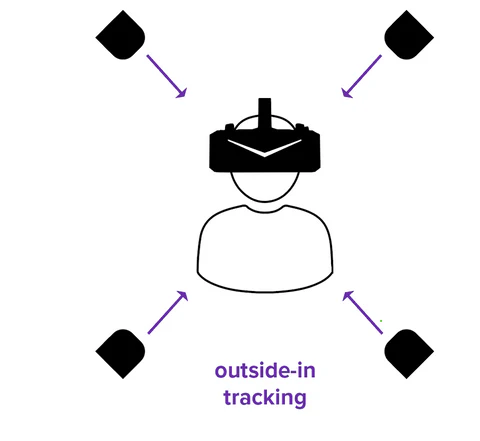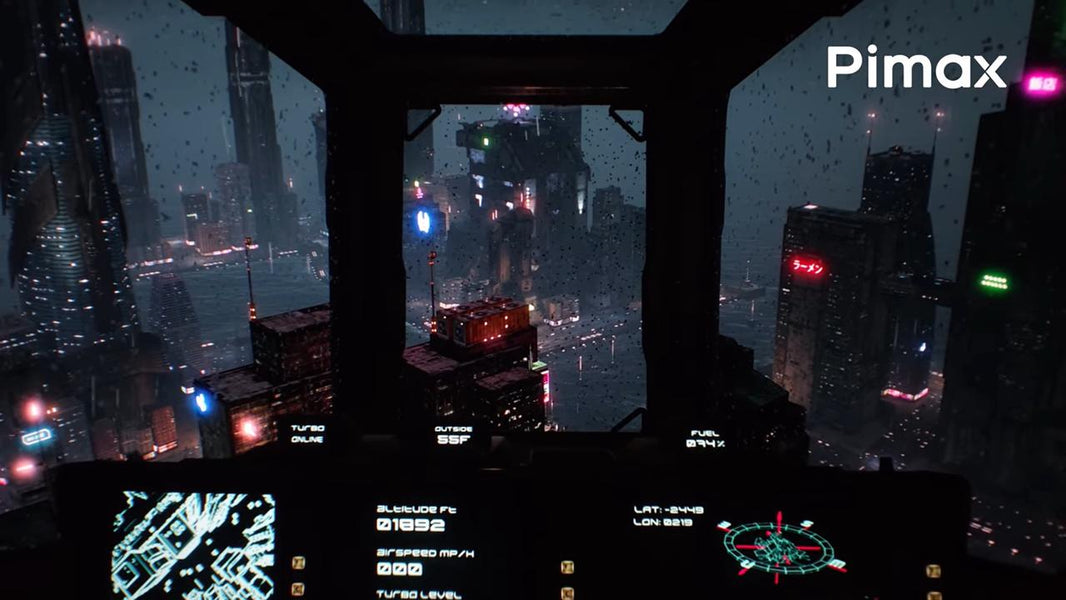In the context of virtual reality (VR), pose tracking refers to the process of accurately capturing the movement and position of the user's head, hands, and body to create a realistic and immersive experience. There are two primary methods of tracking used in VR: Outside-in tracking and Inside-out tracking.
We will explain the following aspects:
- What’s the difference between outside-in and inside-out tracking
- How does VR tracking work
- How to choose tracking methods from Inside-out and Outside-in
- Examples for Reference
What’s the difference between outside-in and inside-out tracking?
The main difference between outside-in and inside-out tracking lies in the method used to capture and interpret the user's movements in virtual reality (VR).
In short, from their title and the image above, it is easy to understand their meaning. Outside-in tracking is the external sensors (like base stations) place around the VR headset to track the movement of the users. Inside-out tracking is the embedded sensors (like cameras) place on the headset or controllers to track the movement of the users.
And here are the key distinctions:
|
Outside-in Tracking |
Inside-out tracking |
|
External sensors |
Sensor reference points |
|
Sensor reference points |
Environment analysis |
|
Accuracy and precision |
Potential for reduced occlusion |
|
Potential for reduced occlusion |
Potential tracking limitations |
|
Larger tracking areas |
Cost-effective solution |
Outside-in Tracking

In terms of outside-in tracking, it is obvious that outside-in tracking relies on external sensors or cameras placed in the environment. These sensors track the movement and position of markers or sensors attached to the user or their VR devices.
Second, the external sensors provide a reference point for calculating the user's position and movement accurately. By triangulating the data from multiple sensors, the system can determine the user's position and orientation in 3D space.
Third, outside-in tracking systems often provide high accuracy and precision due to the use of dedicated sensors and specialized tracking algorithms.
Fourth, since the sensors are external to the user, they are less susceptible to occlusion issues where the user's body or objects block the line of sight between the sensors and the tracked devices.
Last, with multiple sensors placed around the environment, outside-in tracking can cover larger physical spaces, enabling room scale VR.
Inside-out Tracking

For the inside-out tracking, it is known that inside-out tracking uses sensors embedded within the VR headset or controllers. These sensors, such as cameras or infrared sensors, capture the environment around the user.
Second, inside-out tracking algorithms analyze the captured data to determine the user's position and movement relative to their surroundings. Computer vision techniques, simultaneous localization, and mapping (SLAM), or other methods are employed to interpret the sensor data.
Third, inside-out tracking systems are typically more portable and easier to set up since they eliminate the need for external sensors. Users can start using inside-out tracking systems by simply putting on the VR headset.
Fourth, inside-out tracking may have limitations in tracking the user's movements outside the field of view of the embedded sensors. Occlusion of the hands or controllers can also temporarily disrupt tracking accuracy.
Last, inside-out tracking tends to be more cost-effective compared to outside-in tracking since it doesn't require additional sensor infrastructure.
It's important to note that the specific capabilities and limitations of outside-in and inside-out tracking can vary across different VR systems and generations. Technology advancements have led to continuous improvements in both tracking methods, offering users more immersive and accurate VR experiences.
How does VR tracking work?
Outside-in Tracking
- Sensor Setup: In outside-in tracking, the VR system employs external sensors, such as cameras or infrared sensors, strategically positioned in the environment. These sensors serve as reference points and capture the movements and positions of markers or sensors attached to the user or their VR devices. For example, you can check the Pimax 8KX Setup to find out how to get the right position of the base stations and the whole setup issue of an outside-tracking VR headset.
- Marker Detection: The external sensors detect and track the markers or sensors attached to the user's body or VR devices. These markers can be reflective markers, LED markers, or other identifiable features that the sensors can recognize.
- Data Processing: The tracking data captured by the external sensors is sent to a computer or dedicated tracking hardware for processing. Sophisticated algorithms and triangulation techniques are applied to analyze the data and determine the precise position and orientation of the tracked markers in 3D space.
- Pose Estimation: Based on the tracked markers' positions and the known geometry of the VR setup, the system can calculate the user's position and movement relative to the reference points provided by the external sensors. This information is used to update the virtual camera's position and orientation, allowing for realistic rendering of the virtual environment.
- Feedback and Interaction: The accurately tracked user movements enable realistic interactions within the VR environment. The system can detect gestures, hand movements, or controller positions, allowing the user to interact with virtual objects or manipulate the virtual space.
Inside-out Tracking
- Embedded Sensors: Inside-out tracking relies on sensors embedded within the VR headset or controllers. These sensors can include cameras, infrared sensors, or other specialized tracking technologies. They capture the user's environment and movements directly from the VR devices.
- Environmental Analysis: The captured sensor data is processed using computer vision algorithms, simultaneous localization and mapping (SLAM) techniques, or other methods. These algorithms analyze the visual or positional information from the embedded sensors to interpret the user's movements and environment.
- Position Estimation: By analyzing the visual input or using SLAM algorithms, the system determines the user's position and movement within the virtual environment. The tracked data is used to update the virtual camera's position and orientation, providing an accurate representation of the user's movements.
- Tracking Limitations: Inside-out tracking may have limitations in tracking movements outside the field of view of the embedded sensors. Occlusion of the hands or controllers can temporarily disrupt tracking accuracy since the sensors rely on visual input.
- Portability and Ease of Setup: Inside-out tracking offers the advantage of portability and ease of setup. Users can simply put on the VR headset or pick up the controllers, and the tracking system starts working without the need for external sensors or calibration.
How to choose tracking method from Inside-out and Outside-in
1. Environmental Conditions and Space
Inside-out:
- Suitable Environment: Ideal for small or variable environments, such as a living room or office. Since it doesn’t require external sensors, it offers greater flexibility in spatial setup.
- Space Requirements: Requires less space, as there’s no need for external sensors. It can be used in smaller areas.
Outside-in:
- Suitable Environment: Better for environments with ample space and stable conditions, such as a dedicated VR room or lab. Requires sensors to be installed in the corners or walls of the room.
- Space Requirements: Requires sufficient space to install and position external sensors.
2. Tracking Accuracy and Stability
Inside-out:
- Accuracy: May offer lower accuracy in certain conditions (e.g., low light or complex visual backgrounds) due to reliance on built-in cameras and sensors.
- Stability: Can be affected by user occlusion, where hands or body might block the sensors' view.
Outside-in:
- Accuracy: Generally provides higher accuracy as external sensors capture data from multiple angles, reducing occlusion issues.
- Stability: Typically offers more stable tracking, especially in complex environments, as sensors are fixed in place.
3. Installation and Maintenance
Inside-out:
- Installation Ease: No need to install external devices in the room; setup is simpler as you only need to configure and adjust the headset or controllers.
- Maintenance: Maintenance is simpler, generally involving software updates and hardware upkeep.
Outside-in:
- Installation Complexity: Requires installation of sensors in the room, which may involve mounting on walls and ceilings, and cabling.
- Maintenance: Maintenance can be more complex, involving adjustments and checks of sensor positions and handling potential hardware issues.
4. Mobility Freedom
Inside-out:
- Flexibility: Provides higher mobility freedom since the sensors are built into the headset or controllers, not constrained by external devices.
- Adaptability: Users can move freely around the room without being limited by the position of sensors.
Outside-in:
- Limitations: User movement is restricted by the coverage area of external sensors. Movement too far from sensors or sensor occlusion can affect tracking.
- Adaptability: Installation and setup must consider the user’s activity range to ensure sensor coverage for all required tracking areas.
5. Budget and Cost
Inside-out:
- Initial Cost: Typically lower initial cost, as there is no need for additional external sensors or cameras.
- Long-term Cost: May require more technical support and maintenance, but overall costs are more manageable.
Outside-in:
- Initial Cost: Potentially higher initial cost due to the need for additional sensors and installation.
- Long-term Cost: Maintenance and replacement costs may be higher due to wear and tear on external devices.
Conclusion
Choosing between Inside-out and Outside-in tracking methods largely depends on your specific needs and conditions:
- If you need a flexible, convenient setup with greater mobility and are working in a smaller or more complex environment, Inside-out tracking may be more suitable.
- If you prioritize high accuracy and stability and can manage a more complex installation process with potential space constraints, Outside-in tracking might be the better option.
Examples for Reference
| Headset | Tracking Method | Resolution | FOV | Price ($) |
| Pimax Crystal Light | Inside-out & Outside-in | 2880 x2880 per eye | 130° | $899 |
| Pimax 8KX | Outside-in | 3840 X 2160 per eye | 200° | $1,387 |
| Oculus Rift S | Inside-out | 1280 x 1440 per eye | 115° | $399 |
| HTC Vive Pro | Outside-in | 1440 x 1600 per eye | 110° | $1,399 |
| Valve Index | Outside-in | 1440 x 1600 per eye | 130° | $999 |
| PlayStation VR | Outside-in | 960 x 1080 per eye | 100° | Start from $399 |
| Oculus Quest 2 | Inside-out | 1832 x 1920 per eye | 100° | Start from $299 |
| HP Reverb G2 | Inside-out | 2160 x 2160 per eye | 114° | $599 |
Thanks for reading. If you are interested in Pimax Crystal Light or any related VR knowledge, please feel free to join us on our Discord channel.
For Videos Explanation
You may like:
Using a VR headset as a Monitor
Top 5 VR Tips And Tricks | Pimax
What Is Virtual Reality Sickness, How To Fight It? | Pimax
What Is The Local Dimming In VR? | Pimax
What Is The Screen Door Effect In VR? | Pimax


